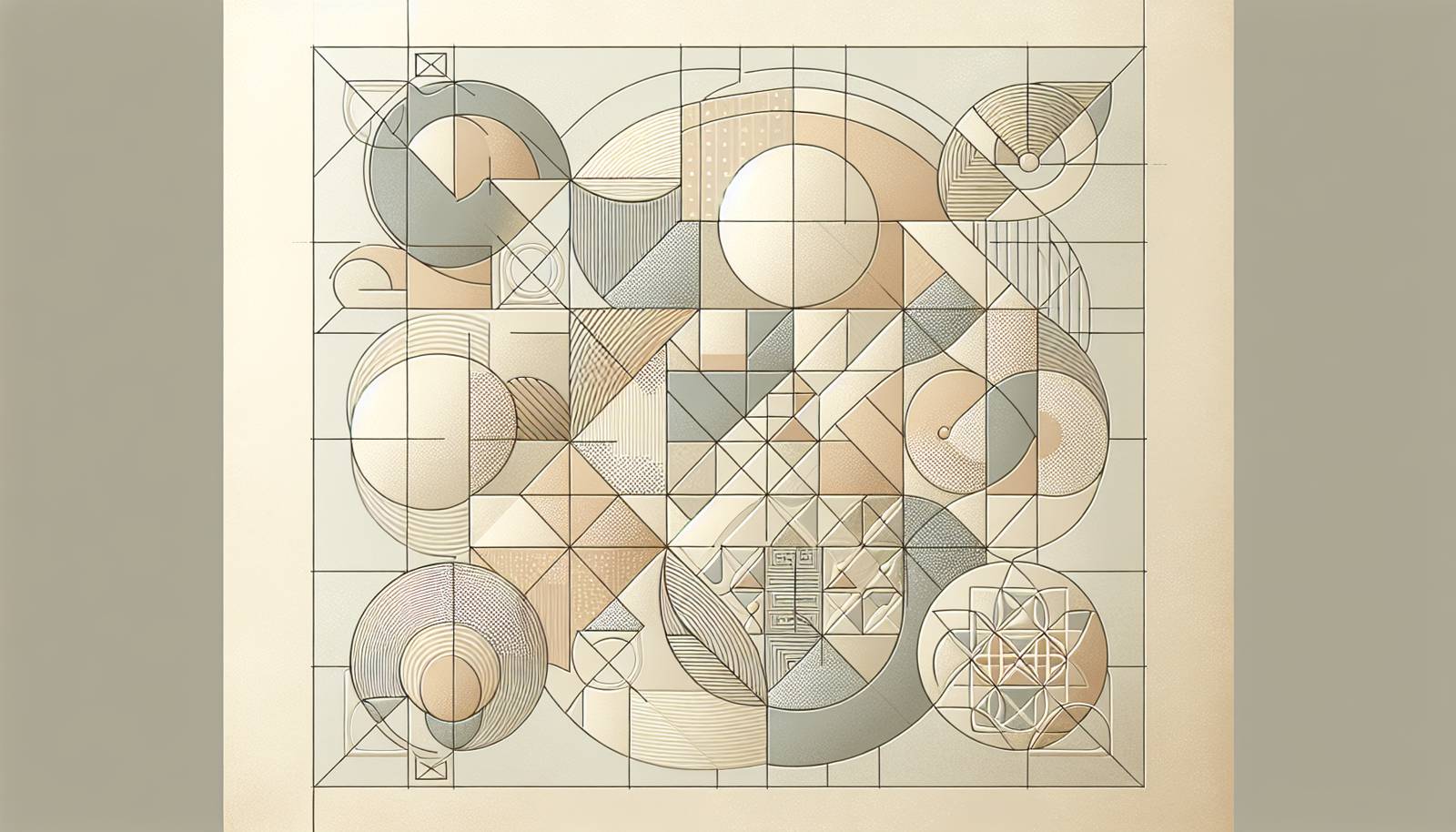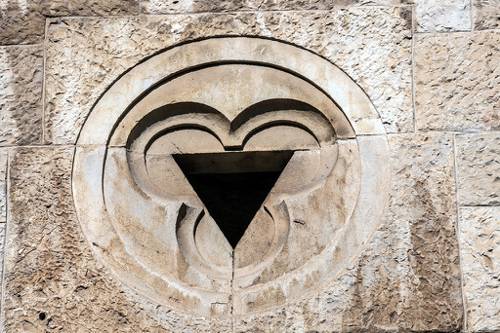
FAQ About Impact of Sacred Geometry in Art and Architecture

What is sacred geometry?
Sacred geometry refers to the symbolic and sacred meanings assigned to certain geometric shapes and proportions. It is rooted in the belief that geometric principles are the foundation of all life, often seen as the blueprint of creation by many ancient civilizations. Key elements include shapes such as circles, squares, triangles, and more complex formations like the Flower of Life and Platonic solids.

How is sacred geometry used in art?
Sacred geometry is used in art to create aesthetically pleasing and harmonious designs. Artists often incorporate geometric principles to convey balance, beauty, and the reflection of the universe's structure. Examples include the intricate mandalas in Hindu and Buddhist art, the use of geometric patterns in Islamic art, and Leonardo da Vinci's works like the 'Vitruvian Man' which illustrate the divine proportions of the human body.

In what ways has sacred geometry influenced architecture?
Sacred geometry has significantly influenced architecture by guiding the proportions and layout of buildings to reflect symmetry, order, and balance believed to align with the universe's patterns. Famous examples include the pyramids of Egypt, which embody precise geometric alignments, Gothic cathedrals with their pointed arches and rose windows, and the harmonious layouts of ancient Greek temples that follow the Golden Ratio.

What are some examples of sacred geometry in architecture?
Notable examples of sacred geometry in architecture include the Great Pyramid of Giza, which uses geometric precision in its design; Notre-Dame Cathedral in Paris, featuring intricate rose windows; and the Parthenon in Athens, which employs the Golden Ratio to create harmony and balance. These structures demonstrate the aesthetic and symbolic importance of geometric principles in architecture.

Why is the Golden Ratio significant in art and architecture?
The Golden Ratio, approximately 1.6180339887, is significant because it is believed to produce aesthetically pleasing and naturally harmonious compositions. This mathematical ratio appears frequently in natural patterns and has been applied to art and architecture for centuries to achieve balance and proportion. Artists like Leonardo da Vinci and architects of structures like the Parthenon leveraged the Golden Ratio to enhance beauty and symmetry.

How did ancient cultures apply sacred geometry to their creations?
Ancient cultures such as the Egyptians and Greeks used sacred geometry in their architectural and artistic creations to align with cosmological and spiritual beliefs. The Egyptians used geometry in constructing pyramidal structures that aligned with celestial bodies. The Greeks focused on proportions and aesthetics, as seen in the Acropolis, where geometric harmony was integral to the design, reflecting harmony between the physical and spiritual world.

What is the Flower of Life, and how is it used in sacred geometry?
The Flower of Life is a geometric figure composed of multiple evenly-spaced, overlapping circles arranged to form a flower-like pattern. It symbolizes the interconnectedness of all life and is considered one of the most significant symbols in sacred geometry. It has been found in various cultural artifacts and is used to inspire spiritual growth, meditation, and introspection in art and architectural designs.

Can sacred geometry be found in modern architecture?
Yes, sacred geometry can be found in modern architecture. Contemporary architects often incorporate geometric principles to create innovative designs that are both functional and aesthetically pleasing. Examples include the Louvre Pyramid in Paris, which uses the proportions of a pyramid, and the Guggenheim Museum in Bilbao, noted for its complex geometric form and structure, blending modern design with ancient principles.

How do mandalas relate to sacred geometry?
Mandalas are intricate geometric designs that represent the universe in Hindu and Buddhist symbolism. They are created using sacred geometry principles, often consisting of concentric circles and other geometric shapes. Mandalas are used as tools for meditation and spiritual growth, representing cosmic and architectural diagrams illustrating the universe's fundamental nature.

What role do Platonic solids play in sacred geometry?
Platonic solids are central to sacred geometry due to their mathematical purity and symmetry. These three-dimensional shapes, consisting of identical faces meeting at equal angles, represent the elements of nature as theorized by Plato. They embody the idea of perfect balance and are often used symbolically and practically in art, architecture, and spiritual practices to express the universe's intrinsic structure.

Are there any misconceptions about sacred geometry?
Yes, there are several misconceptions about sacred geometry. One common misconception is that it is solely mystical without scientific basis. In reality, while it has spiritual significance, many geometric principles involved have mathematical and scientific foundations that describe patterns in nature. Another misconception is that sacred geometry is exclusive to religious art and architecture, whereas it is also prevalent in secular cultural contexts worldwide.

How does sacred geometry influence modern art?
Sacred geometry influences modern art by inspiring artists to use geometric forms to create compositions that suggest universal harmony and spiritual introspection. Artists explore geometry as a base for their visual language, producing works that resonate on both aesthetic and metaphysical levels. Movements such as Cubism and Abstract Art have drawn heavily on geometric forms, reflecting both the mystical and scientific ideas of sacred geometry.

What are the key shapes in sacred geometry?
Key shapes in sacred geometry include the circle, triangle, square, and more complex formations like the Flower of Life and Platonic solids. The circle often represents unity and infinity; the triangle signifies balance and harmony; the square denotes stability and foundation, while Platonic solids symbolize elements of nature and cosmic order. These shapes form the basis of many artistic and architectural designs influenced by sacred geometry.

How does sacred geometry relate to spirituality?
Sacred geometry is closely related to spirituality as it embodies the idea that certain geometric shapes and patterns have innate, divine qualities and connections to the universe. It serves as a spiritual metaphor and a symbolic language used in various religious and philosophical contexts to interpret existence, reflect harmony, and provide a path for meditation and enlightenment.

How can sacred geometry be applied in daily life?
Sacred geometry can be applied in daily life in various ways, including in the design of spaces that promote well-being, in meditation through focusing on geometric patterns, and in art and decor to create visually pleasing environments that reflect harmony and balance. Many also use sacred geometry in personal rituals and spiritual practices to foster a connection with the universe and enhance meditation.

Has sacred geometry been used in religious architecture?
Yes, sacred geometry has been extensively used in religious architecture. Many cathedrals, mosques, temples, and synagogues incorporate geometric designs that reflect the divine order and serve as visual representations of spiritual truths. These designs often aim to create a sacred space conducive to worship, meditation, and connection with the divine, seen in elements like the mandalas in Buddhist temples or the star patterns in Islamic mosques.

What is the significance of the Metatron's Cube in sacred geometry?
Metatron's Cube is a complex geometric figure that encompasses all five Platonic solids in its design, representing the underlying patterns of creation. It is named after the archangel Metatron, who is considered the keeper of divine wisdom in mystical traditions. The cube is used in sacred geometry to symbolize balance, harmony, and the interconnectedness of all things within the universe.

Can sacred geometry be found in natural formations?
Yes, sacred geometry can be found in numerous natural formations. Many patterns in nature follow geometric principles; for example, the spiral patterns of shells and galaxies, the hexagonal shapes of honeycombs, and the branching patterns of trees and rivers. These examples of natural geometry echo the same principles seen in sacred geometry, reflecting a universal pattern of order and symmetry.

How do architects incorporate sacred geometry into their designs?
Architects incorporate sacred geometry into their designs by using proportion and symmetry to create buildings that are not only functional but also aesthetically pleasing and harmonious. They often use geometric shapes and sequences, such as the Golden Ratio and Fibonacci sequence, to dictate the spatial arrangements and aesthetics, ensuring structures align with the inherent patterns found in nature and art.

What is the relationship between the Fibonacci sequence and sacred geometry?
The Fibonacci sequence is closely related to sacred geometry because it demonstrates growth patterns that appear repeatedly in nature, art, and architecture. Each number in the sequence is the sum of the two preceding ones (1, 1, 2, 3, 5, etc.), and it gives rise to the Fibonacci spiral, a curve that approximates the Golden Spiral. This relationship manifests in the natural world through the arrangement of leaves, flowers, and shells, highlighting the integration of mathematics, art, and nature in sacred geometry.
